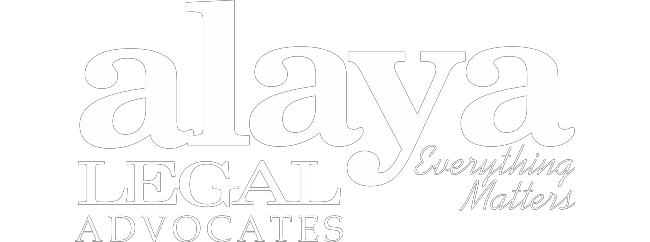What is a REC?
The renewable energy certificate (REC) incentivizes renewable energy producers (RE). India took this initiative to develop the RE market over a decade ago. Pan-India market-based Renewable Energy Certificate (REC) Mechanism was introduced in the year 2010 under the Electricity Act 2003 (“EA 2003“) and the National Tariff Policy 2006 (“Tariff Policy 2006“) to address the mismatch between the availability of Resources and the requirement of the obligated entities to fulfil their renewable purchase obligation (RPO).
In simple terms, the REC market is a mechanism that enables the trading of RECs. As of 2022, the Central Electricity Regulatory Commission (CERC) has implemented regulations for the REC mechanism. These regulations supersede the CERC (Terms and Conditions for Renewable Energy Certificates for Renewable Energy Generation) Regulations, 2010, which earlier governed the pan-India market-based Renewable Energy Certificates (“RECs“) mechanism in India.
RE producers in India receive one REC or more than one REC if the Certificate Multiplier applies for each megawatt-hour of RE generation. RE producers sell electricity separately in a market and also trade in RECs.
Thus, RECs can be understood as market-based instruments to promote renewable sources of energy and the development of the electricity market. The connection between REC trading price and electricity rate is a separate topic for discussion.
One REC is created when an eligible renewable energy source generates one megawatt-hour of electricity.
REC is a tracking mechanism for wind, solar, and other green energies flowing into the power grid. RECs are known by various names, including Green tag, Tradable Renewable Certificates (TRCs), Renewable Electricity Certificates, or Renewable Energy Credits.
Trading of RECs in India
In India, RECs are traded on two power exchanges, the Indian Energy Exchange (IEX) and the Power Exchange of India (PXIL). The price of RECs is determined by market demand and contained between the ‘floor price’ (minimum price) and ‘forbearance price’ (maximum price) specified by the Central Electricity Regulatory Commission (CERC).
RECs – an aid to address Renewable purchase obligation (RPO)
Under the EA 2003 and the Tariff Policy 2006, RPO is a mechanism by which the obligated entities are obliged to purchase a certain percentage of electricity from Renewable Energy sources as a percentage of the total consumption of electricity. RPOs are categorized as Solar and Non-Solar RPO. With the goal of achieving the target of 175 GW of renewable energy by 2022, including a solar energy capacity of 100 GW, the Ministry of Power (MoP) had notified the target RPO trajectory up to the year 2022. The RPO targets specified for solar and non-solar power are to be adhered to and met uniformly by the Obligated Entities of all the States and Union Territories. Obligated Entities (which include Distribution companies, i.e. Discoms, Open Access Consumers and Captive power producers) are obligated to purchase a minimum share of their electricity from RE sources as per RPO targets.
In India, the RE potential is not evenly distributed among its states. For instance, seven states (Andhra Pradesh, Gujarat, Jammu and Kashmir, Karnataka, Maharashtra, Rajasthan, and Tamil Nadu) account for over 70% of the country’s RE potential. This means that some states with lower RE potential may struggle to meet their RE targets – REC is a rescue for such scenarios.
Factors that determine the growth market of RECs are:
- Increase in the renewable energy market share – attributable to rise in rooftop solar panels, micro wind turbines, and micro hydropower plants.
- Government policies towards the development of cost-effective and sustainable resources.
- The presence of water streams, canals, and other flowing water resource places drives the demand for mini hydro power plants.
There is a shortfall in demand for RECs, possibly, because of weak enforcement for failure to meet RPOs. It appears there are few takers for RECs.
Regulation for Renewable Energy Certificates
The Central Electricity Regulatory Commission (CERC), by notification issued on 9th May 2022, made the regulations on Renewable Energy Certificate (REC) in fulfilment of its mandate to promote renewable sources of energy and the development of the market in electricity. The Central Electricity Regulatory Commission (Terms and Conditions for Renewable Energy Certificates for Renewable Energy Generation) Regulations, 2022, came into force on 5th December 2022. The framework of REC is expected to give a push to RE capacity addition in the country.
Salient features of the REC Framework
- Issue of RECs – Eligible Entities may issue RECs.
– RE generating plants provided they meet specified conditions.
– Captive generating plants provided they meet specified conditions.
– Discoms or open access consumers are also eligible to issue RECs; however, only to the extent of RE power purchased in excess of / beyond their RPO obligation.
- Framework for REC Mechanism. The National Load Despatch Centre continues to remain the central nodal agency (“NLDC/Central Agency“) to govern the REC mechanism. The process followed is:
– Grant of accreditation for RECs
– Grant of registration for RECs
– Issuance of RECs
– Exchange and redemption of RECs
- Denomination and pricing of RECs
– the price of REC is discovered by the market forces on the power exchanges or mutually decided between the trader and generator. Therefore, the ‘floor price‘ and a ‘forbearance price’ are done away with.
- Certificate Multiplier
– The concept of a Certificate Multiplier has been introduced for new projects based on the tariff range of various RE technologies adopted by such projects.
RECs – some pros and cons
The discussion on RECs would be incomplete without touching upon some pros and cons.
Some Pros:
- RECs are environmentally friendly.
- RECs reduce one’s own carbon emissions.
- RECs incentivize the renewable energy market.
- RECs promote the decentralization of the energy supply.
Some Cons
- RECs do not guarantee carbon avoidance. A local carbon market needs to be evolved as a step towards carbon avoidance.
- RECs often lack additionality as most projects would have been executed regardless of REC.
- RECs do not curtail energy from fossil fuels or limit their production.
- RECs are sourced from renewable energy, and so share some potential intermittent energy production problems associated with it.
Sources:
Electricity Act 2003
National Tariff Policy 2006
Press Information Bureau Releases, Government of India
https://cercind.gov.in/regulations/REC-Regulations-2022.pdf
https://www.sciencedirect.com/science/article/pii/S0960148123000770
https://rpo.gov.in/Home/Objective
https://www.recregistryindia.nic.in/pdf/REC_india.pdf
Keywords: Renewable, Energy, REC, Electricity, Power Plant, NLDC, Hydropower




























